Boris Johnson and Jeremy Hunt's debate fact-checked
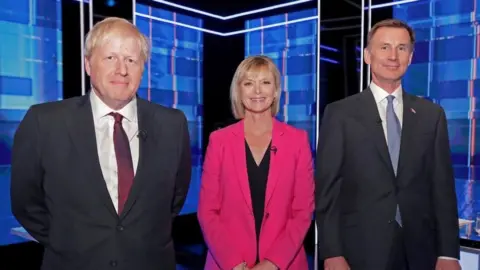 Getty Images
Getty ImagesThe Reality Check team has been fact-checking claims by Boris Johnson and Jeremy Hunt who appeared on an ITV debate as part of the race to succeed Theresa May as Conservative leader and prime minister.
Here are some of the claims they made.
Brexit and the Irish border
The debate started with questions about Brexit and how they planned to ensure that the UK leaves the European Union (EU) on the Brexit deadline of 31 October.
The candidates were asked about the Irish border (which will become the only land border between the UK and the EU after Brexit) and the controversial backstop plan.
The backstop is the insurance policy, in Theresa May's deal, designed to prevent a "hard" Irish border by keeping the UK in a close trading relationship with the EU.
This was opposed by many Conservative MPs who feared the UK would become trapped in it for years, leading to her deal being voted down three times.
Boris Johnson said in the debate that the solution to the border issue could be found during - what he called - the "implementation period" after Brexit.

Verdict: Mr Johnson says the Irish border issue can be dealt with during the implementation period. You only get an implementation period if you pass a withdrawal agreement. The EU says it is not prepared to renegotiate the withdrawal agreement, which includes the backstop for the Irish border.
Technology and the Irish border
Jeremy Hunt said there were ways of avoiding checks at the Irish border after Brexit, including technology. "Not new technology, but technology that already exists," he said.
But the EU has said that such a solution does not currently exist.
"We looked at every border on this Earth, every border the EU has with a third country - there's simply no way you can do away with checks and controls," its director-general for trade, Sabine Weyand, said in January.
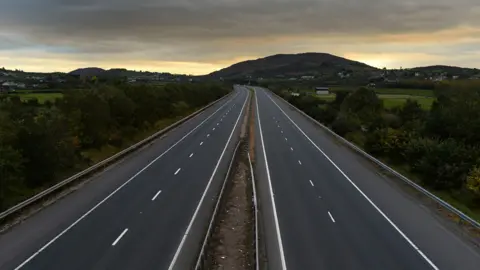 Getty Images
Getty ImagesEven if the EU agreed to implement a solution using existing technology (such as one based on mobile phone tracking) - there's no guarantee it could be designed and put in place by 31 October. Some trade experts think border technology is 10 years away.
A further challenge is that EU law requires some products to be physically checked at the point when they enter its single market - chemicals and food are among them.
Mr Hunt says that these inspections should be allowed to take place using "mobile" units away from the border and that a trusted trader scheme could allow some businesses to by-pass checks.
However, that would require the EU to agree to change its own rules.
The use of "alternative arrangements" as a solution to the Irish border was also echoed by Boris Johnson in the debate.
You can read more about the potential for technology to solve the issue of the Irish border here.
Article 24 comes up again
Jeremy Hunt criticised Boris Johnson for having referred in the past to Article 24 - which is part of the General Agreement on Tariffs and Trade (GATT) - as a possible solution to the problems of a no-deal Brexit.
Mr Johnson had previously said that it would allow the UK to continue to trade with the EU without tariffs (taxes on imports) while both sides negotiated a permanent future trade deal.
Mr Hunt said: "You could only get that agreement [GATT 24] to waive tariffs if the other sides agrees and they have made absolutely clear they won't agree."
He's right that Article 24 only stands if there is an agreement from both sides, at least in principle, and a no-deal scenario would imply that there wasn't. You can read more about it here.
The £39bn bill
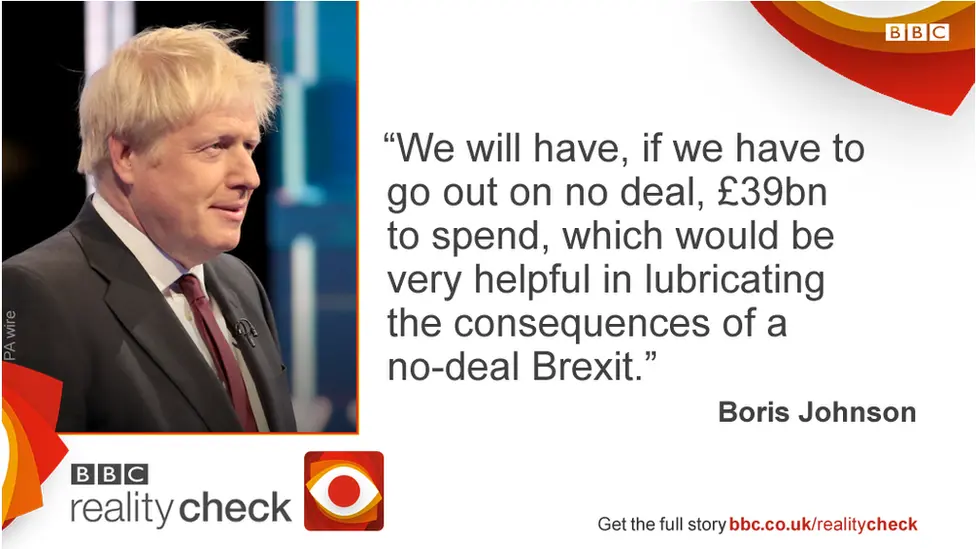
The UK government agreed to pay the EU a settlement - widely estimated as £39bn - as part of Theresa May's withdrawal deal. The agreement was rejected by Parliament.
Boris Johnson said that if the UK left without a deal, it would have this £39bn to spend.
He said in the past that leaving a question mark over the sum would incentivise the EU to shift its stance in the UK's favour in order to get a deal.
Not paying the bill could lead to a legal challenge and it would also risk souring relations when it comes to future trade talks.
The EU has said it will not open talks on the future relationship until the agreement over the money has been settled (along with the Irish border and EU citizens' rights).
Hospitals and jobs
Mr Hunt referred to his record as health secretary saying that more patients were being treated in "good" or "outstanding" hospitals:
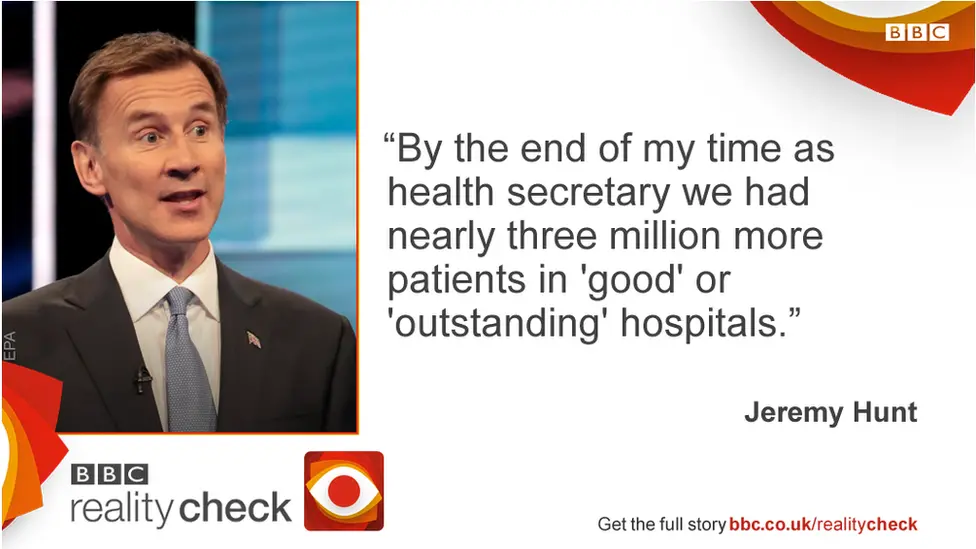
Verdict: Between 2016 when ratings were introduced and 2018 when Jeremy Hunt ended his time as health secretary, the proportion of hospitals rated "good" or "outstanding" went from 56% to 66%, treating about 2.7 million more patients. But there was also a 1.6 million increase in total hospital admissions, so some of this rise was down to there being more patients, not more good hospitals.
Mr Hunt also defended the change to the benefits system called Universal Credit and said it had got "a lot of people back into work".
He went on to make this claim about job creation:
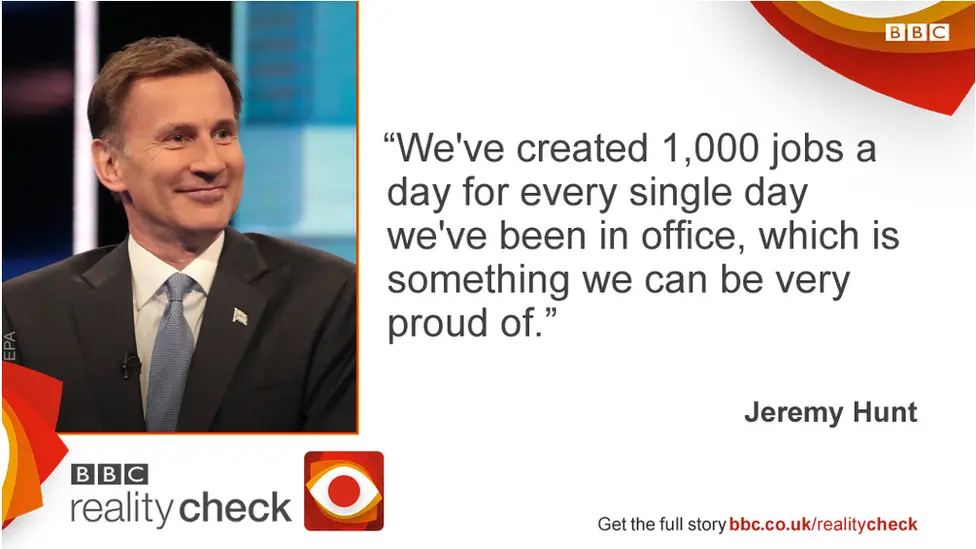
Verdict: According to the Office for National Statistics there were 3.7 million more people in work in 2019 compared with 2010. Divide that by the 3,346 days since David Cameron became prime minister and you get about 1,106 people a day. This tells you how employment has risen, but not how many jobs have been created. It also doesn't factor in the growing population or the type of work being created.



